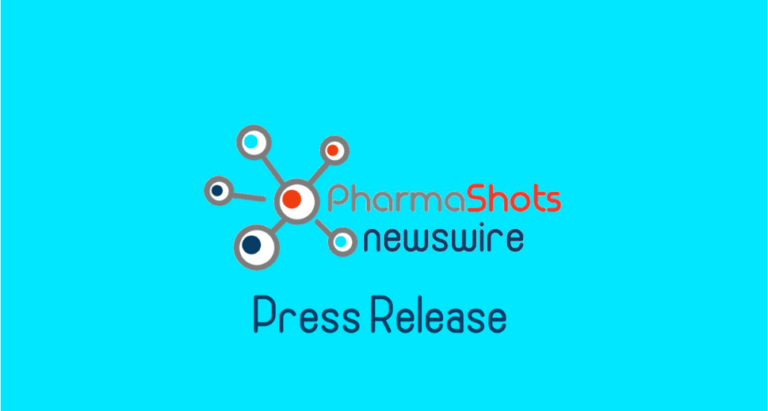Amgen And Allergan's MVASI (bevacizumab-awwb) And KANJINTI (trastuzumab-anns) Now Available In The United States
[caption id="attachment_9277" align="alignnone" width="747"] Press Release[/caption]
First Biosimilar Avastin and Herceptin Products to Launch in the United States
Press Release[/caption]
First Biosimilar Avastin and Herceptin Products to Launch in the United States
 Press Release[/caption]
First Biosimilar Avastin and Herceptin Products to Launch in the United States
Press Release[/caption]
First Biosimilar Avastin and Herceptin Products to Launch in the United States
THOUSAND OAKS, Calif.,?July 18, 2019?/PRNewswire/ --?Amgen?(NASDAQ:AMGN) and?Allergan plc?(NYSE:AGN) today announced that MVASI? (bevacizumab-awwb), a biosimilar to Avastin??(bevacizumab), and KANJINTITM(trastuzumab-anns), a biosimilar to Herceptin??(trastuzumab), are now available in?the United States?(U.S.).
MVASI, the first oncology therapeutic biosimilar approved by the?U.S. Food and Drug Administration?(FDA),?is approved for the treatment of five types of cancer: in combination with chemotherapy for metastatic colorectal cancer (mCRC); in combination with chemotherapy for non-squamous non-small cell lung cancer (NSCLC); recurrent glioblastoma; in combination with interferon-alfa for metastatic renal cell carcinoma; and in combination with chemotherapy for?persistent, recurrent, or metastatic cervical cancer.
KANJINTI is FDA?approved for all approved indications of Herceptin: for the treatment of HER2-overexpressing adjuvant and metastatic breast cancer and HER2-overexpressing metastatic gastric or gastroesophageal junction adenocarcinoma.
"The introduction of biosimilars is an important step in increasing options for treating HER2-positive breast cancers, which account for about 25% of all breast cancers," said?Paula Schneider, chief executive officer,?Susan G. Komen Breast Cancer Foundation. "As patient advocates, we are working to ensure that patients are educated about biosimilars and understand that these?FDA-approved treatments are just as effective as the original biologic drugs."
The Wholesale Acquisition Cost (WAC or "list price") of both MVASI and KANJINTI will be 15% lower than their reference products.?MVASI is being made available at a WAC of?$677.40?per 100 mg and?$2,709.60?per 400 mg single-dose vial, 15% less than the WAC for Avastin.?KANJINTI is being made available at a WAC of?$3,697.26?per 420 mg multi-dose vial, 15% below the WAC of Herceptin. At launch, MVASI is priced 12% below the current Avastin Average Selling Price (ASP) and KANJINTI is priced 13% below the current Herceptin ASP. Both products will be available from both wholesalers and specialty distributors.
"Several years ago,?Amgen?made the strategic decision to invest in building a global biosimilars business, leveraging our nearly four decades of experience in developing and manufacturing best-in-class biologics," said?Murdo Gordon, executive vice president of Global Commercial Operations at?Amgen. "Following several recent launches in?Europe, we are excited to be launching our first two biosimilars in the U.S., which will provide for immediate savings for?Medicarepatients and commercial payers.?We have several more biosimilars advancing through our pipeline, even as we continue to drive innovation through novel therapies for cancer and other serious diseases."
The WAC price measure does not account for discounts and rebates and may be significantly higher than out-of-pocket cost for patients, which can vary depending on several factors.?Medicare?and commercial insurance, for example, will generally pay for MVASI and KANJINTI based on ASP rather than WAC. Out-of-pocket cost may also depend on and be reduced by additional factors, including eligibility for patient assistance.
Actual costs to patients and providers for MVASI and KANJINTI are anticipated to be lower than WAC as WAC does not reflect discounts or rebates. Out-of-pocket costs to patients will vary depending on insurance status and eligibility for patient assistance. MVASI and KANJINTI will be available from both wholesalers and specialty distributors.
"As the first products from our collaboration with?Amgen?to be launched in the U.S., MVASI and KANJINTI reinforce our ongoing dedication to providing patients with additional treatment options," said?David Nicholson, chief research and development officer at?Allergan. "We are excited about the progress we've made through this partnership and look forward to continued milestones together with our remaining biosimilar products."
Amgen?and?Allergan?are committed to developing high-quality biosimilars supported by robust analytical and clinical packages. MVASI and KANJINTI were proven to be highly similar to, and to have no clinically meaningful differences in terms of safety and effectiveness from Avastin and Herceptin, respectively, based on a totality of evidence, which included comparative analytical, clinical safety and efficacy data.?At the time of?FDA?approval, KANJINTI was the only trastuzumab biosimilar to incorporate the evaluation of a single transition in the clinical study, in which a portion of patients who began the study on Herceptin made a single transition to KANJINTI. This portion of the study demonstrated similar safety and immunogenicity in patients on KANJINTI who were previously on Herceptin.
Amgen?has a total of 10 biosimilars in its portfolio, three of which have been approved in the U.S.
About MVASI? (bevacizumab-awwb) in the U.S.
MVASI is a recombinant humanized monoclonal IgG1 antibody that binds VEGF and prevents the interaction of VEGF to its receptors (Flt-1 and KDR) on the surface of endothelial cells. The interaction of VEGF with its receptors leads to endothelial cell proliferation and new blood vessel formation in in vitro models of angiogenesis.? Administration of bevacizumab to xenotransplant models of colon cancer in nude (athymic) mice caused reduction of microvascular growth and inhibition of metastatic disease progression.
MVASI, in combination with intravenous fluorouracil-based chemotherapy, is indicated for the first- or second-line treatment of patients with metastatic colorectal cancer (mCRC).
MVASI, in combination with fluoropyrimidine- irinotecan- or fluoropyrimidine-oxaliplatin-based chemotherapy, is indicated for the second-line treatment of patients with mCRC who have progressed on a first-line bevacizumab-containing regimen.
Limitations of Use:?MVASI is not indicated for adjuvant treatment of colon cancer.
MVASI, in combination with carboplatin and paclitaxel, is indicated for the first line treatment of patients with unresectable, locally advanced, recurrent or metastatic non-squamous non-small cell lung cancer (NSCLC).
MVASI is indicated for the treatment of recurrent glioblastoma (GBM) in adults.
MVAS, in combination with interferon-alfa, is indicated for the treatment of metastatic renal cell carcinoma (mRCC).
MVASI, in combination with paclitaxel and cisplatin or paclitaxel and topotecan, is indicated for the treatment of patients with persistent, recurrent, or metastatic cervical cancer.
MVASI (bevacizumab-awwb) Professional Important Safety Information
Gastrointestinal (GI) perforation
- Serious and sometimes fatal GI perforation occurred at a higher incidence in bevacizumab-treated patients compared to patients treated with chemotherapy
- The incidence of GI perforation ranged from 0.3% to 3% across clinical studies
- Discontinue MVASITM?in patients with GI perforation
- The incidence of wound healing and surgical complications, including serious and fatal complications, is increased in bevacizumab-treated patients
- Withhold MVASITM?for at least 28 days prior to elective surgery. Do not administer MVASITM?for at least 28 days after surgery and until the wound is fully healed
- Discontinue in patients with wound healing complications requiring medical intervention
- Severe or fatal hemorrhage, including hemoptysis, GI bleeding, hematemesis, central nervous system hemorrhage, epistaxis, and vaginal bleeding, occurred up to 5-fold more frequently in patients receiving bevacizumab. In clinical studies, the incidence of grade =3 hemorrhagic events among patients receiving bevacizumab ranged from 0.4% to 7%
- Do not administer MVASITM?to patients with serious hemorrhage or a recent history of hemoptysis (=1/2 tsp of red blood)
- Discontinue MVASITM?in patients who develop grade 3-4 hemorrhage
- Non-GI fistulae (<1% to 1.8%, highest in patients with cervical cancer)
- Arterial thromboembolic events (grade =3, 5%, highest in patients with GBM)
- Renal injury and proteinuria
- Grade 3-4 proteinuria ranged from 0.7% to 7% in clinical studies
- Nephrotic syndrome (<1%)
- Venous thromboembolism (grade =3, 11% seen in GOG-0240)
- Hypertension (grade 3-4, 5%-18%)
- Posterior reversible encephalopathy syndrome (PRES) (<0.5%)
- Congestive heart failure (CHF) (1%)
- Based on the mechanism of action and animal studies, MVASITM?may cause fetal harm when administered to pregnant women
- Advise female patients that MVASITM?may cause fetal harm, and to inform their healthcare provider of a known or suspected pregnancy
- Advise females of reproductive potential to use effective contraception during treatment with MVASITM?and for 6 months after the last dose
- Advise nursing women that breastfeeding is not recommended during treatment with MVASITM?and for 6 months following their last dose of treatment
- MVASITM?may impair fertility
- Across indications, the most common adverse reactions observed in bevacizumab -treated patients at a rate of >10% were: epistaxis, headache, hypertension, rhinitis, proteinuria, taste alteration, dry skin, rectal hemorrhage, lacrimation disorder, back pain, exfoliative dermatitis
- Across all studies, bevacizumab was discontinued in 8% to 22% of patients because of adverse reactions
- In CC, grade 3 or 4 adverse reactions in Study GOG-0240, occurring at a higher incidence (=2%) in 218 patients receiving bevacizumab plus chemotherapy compared to 222 patients receiving chemotherapy alone, were abdominal pain (12% vs 10%), diarrhea (6% vs 3%), anal fistula (4% vs 0%), proctalgia (3% vs 0%), urinary tract infection (8% vs 6%), cellulitis (3% vs 0.5%), fatigue (14% vs 10%), hypertension (11% vs 0.5%), thrombosis (8% vs 3%), hypokalemia (7% vs 4%), hyponatremia (4% vs 1%), dehydration (4% vs 0.5%), neutropenia (8% vs 4%), lymphopenia (6% vs 3%), back pain (6% vs 3%), and pelvic pain (6% vs 1%)
- In mRCC, the most common grade 3-5 adverse events in AVOREN, occurring at a >2% higher incidence in bevacizumab-treated patients vs controls, were fatigue (13% vs 8%), asthenia (10% vs 7%), proteinuria (7% vs 0%), hypertension (6% vs 1%, including hypertension and hypertensive crisis), and hemorrhage (3% vs 0.3%;, including epistaxis, small intestinal hemorrhage, aneurysm ruptured, gastric ulcer hemorrhage, gingival bleeding, hemoptysis, hemorrhage intracranial, large intestinal hemorrhage, respiratory tract hemorrhage, and traumatic hematoma)
- In rGBM Study EORTC 26101, 22% of patients discontinued treatment in the bevacizumab with lomustine arm due to adverse reactions compared with 10% of patients in the lomustine arm. In patients receiving bevacizumab with lomustine, the adverse reaction profile was similar to that observed in other approved indications
- In NSCLC, grade 3-5 (nonhematologic) and grade 4-5 (hematologic) adverse events in Study E4599 occurring at a =2% higher incidence in bevacizumab-treated patients vs controls were neutropenia (27% vs 17%), fatigue (16% vs 13%), hypertension (8% vs 0.7%), infection without neutropenia (7% vs 3%), venous thromboembolism (5% vs 3%), febrile neutropenia (5% vs 2%), pneumonitis/pulmonary infiltrates (5% vs 3%), infection with grade 3 or 4 neutropenia (4% vs 2%), hyponatremia (4% vs 1%), headache (3% vs 1%), and proteinuria (3% vs 0%)
- In first-line mCRC, the most common grade 3-4 events in Study 2107, which occurred at a =2% higher incidence in the bevacizumab plus IFL vs IFL groups, were asthenia (10% vs 7%), abdominal pain (8% vs 5%), pain (8% vs 5%), hypertension (12% vs 2%), deep vein thrombosis (9% vs 5%), intra-abdominal thrombosis (3% vs 1%), syncope (3% vs 1%), diarrhea (34% vs 25%), constipation (4% vs 2%), leukopenia (37% vs 31%), and neutropenia (21% vs 14%)
- In second-line mCRC, the most common grade 3-5 (nonhematologic) and 4-5 (hematologic) events in Study E3200, which occurred at a higher incidence (=2%) in the bevacizumab plus FOLFOX4 vs FOLFOX4 groups, were fatigue (19% vs 13%), diarrhea (18% vs 13%), sensory neuropathy (17% vs 9%), nausea (12% vs 5%), vomiting (11% vs 4%), dehydration (10% vs 5%), hypertension (9% vs 2%), abdominal pain (8% vs 5%), hemorrhage (5% vs 1%), other neurological (5% vs 3%), ileus (4% vs 1%), and headache (3% vs 0%). These data are likely to underestimate the true adverse event rates due to the reporting mechanisms used in this study
- As part of a treatment regimen containing doxorubicin, cyclophosphamide and either paclitaxel or docetaxel
- As part of treatment with docetaxel and carboplatin
- As a single agent following multi-modality anthracycline-based therapy
- In combination with paclitaxel for the first line treatment of HER2-overexpressing metastatic breast cancer
- As a single agent for treatment of HER2-overexpressing breast cancer in patients who have received one or more chemotherapy regimens for metastatic disease
- Trastuzumab products administration can result in sub-clinical and clinical cardiac failure. The incidence and severity was highest in patients receiving trastuzumab with anthracycline-containing chemotherapy regimens
- Evaluate left ventricular function in all patients prior to and during treatment with KANJINTITM. Discontinue KANJINTITM?treatment in patients receiving?adjuvant therapy and withhold KANJINTITM?in patients with metastatic disease for clinically significant decrease in left ventricular function
- Trastuzumab products administration can result in serious and fatal infusion reactions and pulmonary toxicity. Symptoms usually occur during or within 24 hours of administration. Interrupt KANJINTITM?infusion for dyspnea or clinically significant hypotension. Monitor patients until symptoms completely resolve. Discontinue KANJINTITM?for anaphylaxis, angioedema, interstitial pneumonitis,?or acute respiratory distress syndrome
- Exposure to trastuzumab products during pregnancy can result in oligohydramnios and oligohydramnios sequence manifesting as pulmonary hypoplasia, skeletal abnormalities, and neonatal death. Advise patients of these risks and the need for effective contraception
- Administration of trastuzumab products can result in sub-clinical and clinical cardiac failure. The incidence and severity was highest in patients receiving trastuzumab with anthracycline-containing chemotherapy regimens. In a pivotal adjuvant breast cancer trial, one patient who developed CHF died of cardiomyopathy
- Trastuzumab products can cause left ventricular cardiac dysfunction, arrhythmias, hypertension, disabling cardiac failure, cardiomyopathy, and cardiac death
- Trastuzumab products can also cause asymptomatic decline in left ventricular ejection fraction (LVEF)
- Discontinue KANJINTITM?treatment in patients receiving adjuvant breast cancer therapy and withhold KANJINTITM?in patients with metastatic disease for clinically significant decrease in left ventricular function
- Evaluate cardiac function prior to and during treatment. For adjuvant breast cancer therapy, also evaluate cardiac function after completion of KANJINTITM
- Conduct thorough cardiac assessment, including history, physical examination, and determination of LVEF by echocardiogram or MUGA scan
- Monitor frequently for decreased left ventricular function during and after KANJINTITM?treatment
- Monitor more frequently if KANJINTITM?is withheld for significant left ventricular cardiac dysfunction
- KANJINTITM?administration can result in serious and fatal infusion reactions
- Symptoms usually occur during or within 24 hours of KANJINTITM?administration
- Interrupt KANJINTITM?infusion for dyspnea or clinically significant hypotension
- Monitor patients until symptoms completely resolve
- Discontinue KANJINTITM?for infusion reactions manifesting as anaphylaxis, angioedema, interstitial pneumonitis, or acute respiratory distress syndrome. Strongly consider permanent discontinuation in all patients with severe infusion reactions
- Infusion reactions consist of a symptom complex characterized by fever and chills, and on occasion include nausea, vomiting, pain (in some cases at tumor sites), headache, dizziness, dyspnea, hypotension, rash, and asthenia
- Exposure to trastuzumab products during pregnancy can result in oligohydramnios and oligohydramnios sequence manifesting as pulmonary hypoplasia, skeletal abnormalities, and neonatal death. Advise patients of these risks and the need for effective contraception
- Verify the pregnancy status of females of reproductive potential prior to the initiation of KANJINTITM
- Advise pregnant women and females of reproductive potential that exposure to KANJINTITM?during pregnancy or within 7 months prior to conception can result in fetal harm
- Advise females of reproductive potential to use effective contraception during treatment and for at least 7 months following the last dose of KANJINTITM. Advise female patients to contact their healthcare provider with a known or suspected pregnancy
- Consider the developmental and health benefits of breastfeeding along with the mother's clinical need for KANJINTITM?treatment and any potential adverse effects on the breastfed child from KANJINTITM?or from the underlying maternal condition
- Trastuzumab products can result in serious and fatal pulmonary toxicity,?which includes dyspnea, interstitial pneumonitis, pulmonary infiltrates, pleural effusions, noncardiogenic pulmonary edema, pulmonary insufficiency and hypoxia, acute respiratory distress syndrome, and pulmonary fibrosis. Such events can occur as sequelae of infusion reactions
- Patients with symptomatic intrinsic lung disease or with extensive tumor involvement of the lungs, resulting in dyspnea at rest, appear to have more severe toxicity
- Discontinue KANJINTITM?in patients experiencing pulmonary toxicity
- In randomized, controlled clinical trials, the per-patient incidences of NCI-CTC Grade 3-4 neutropenia and of febrile neutropenia were higher in patients receiving trastuzumab in combination with myelosuppressive chemotherapy as compared to those who received chemotherapy alone. The incidence of septic death was similar among patients who received trastuzumab and those who did not
- The most common adverse reactions associated with trastuzumab products in breast cancer were fever, nausea, vomiting, infusion reactions, diarrhea, infections, increased cough, headache, fatigue, dyspnea, rash, neutropenia, anemia, and myalgia
- The most common adverse reactions associated with trastuzumab products in metastatic gastric cancer were neutropenia, diarrhea, fatigue, anemia, stomatitis, weight loss, upper respiratory tract infections, fever, thrombocytopenia, mucosal inflammation, nasopharyngitis, and dysgeusia





